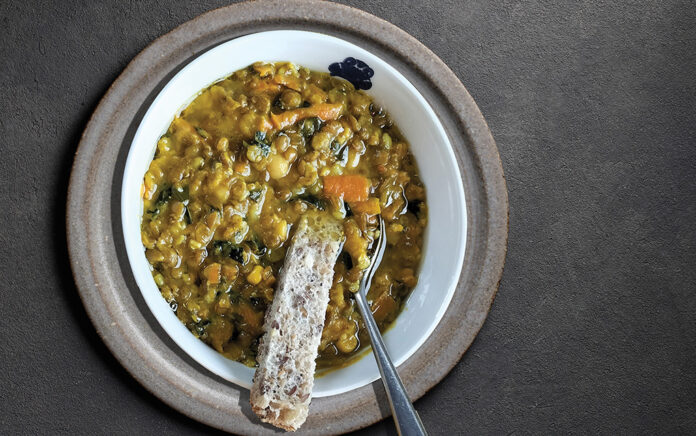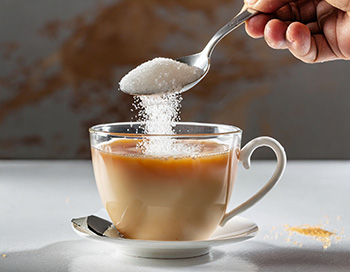Potage, the traditional staple food across Europe for centuries, often included foraged roots and greens. Everyone ate it in one form or another.
The wealthy enjoyed various exotic varieties based on meat, fish, or game, while the average worker made do with vegetables, herbs, and grain.
Potage kept thousands of people alive during times of famine. When affluent families started planting cottage vegetable and herb gardens, sometimes with a fruit tree or two on the perimeter, these became known, and still are in some places, as ‘potagers.’
Pease Porridge, valued by common folk in Old Britain is a potage made of dried yellow peas, boiled until they’re as thick as hummus.
Today’s version is Pea & Ham Soup. Minus the ham, it’s a delicious way to enjoy natural, un-processed pea protein. Dhal, the Indian version, is spiced with cumin, coriander, turmeric, chilli, and so on. Yum!
Minestrone is a popular Italian version. For Native Americans, corn and beans were used, and sometimes acorns, chestnuts, or walnuts were added. Yes, under many different traditional names, and in many forms, potage is eaten around the world, with vegetables included or served alongside the thick grain or legume mush. Sweet forms of English and French potage, made with grains, dairy milk, or almond milk, became known as porridge.
If you fancy venturing into the romantic realm of savoury medieval English potage recipes, gather some oatmeal, violet & strawberry leaves, endive & chicory, marigold flowers, scallions, spinach, parsley, wild prickly-oxtongue herbs, and mutton offcuts. Hmm … prickly herbs and mutton? Maybe not so romantic after all!
Food is a symbol of social status, with meat at the top of the ladder, and weeds at the bottom. Ironically, peasants working outdoors anywhere in the world who could eat sufficient amounts of good potage, and very small amounts of animal food, may well have been healthier than the privileged ruling class.
Now we know why; the rich grabbed most of the animal food, and the poor only got enough to supply essential Vit B12. The bulk of their diet was plant-based whole foods.
Meanwhile, here we are in 2023, shopping bag in hand, musing on what’s on the shop shelves. I’ve a surprise for you. Take a close look at a packet of ordinary soup mix. Yes! – it is potage mix! The basic ingredients, cereal and legumes! Cook as is or add veges of your choice.
Still nourishing us to this day, potage has got what it takes to see us through hard times. Make it your own way, as thick or thin as you like, and you’re keeping ancient cultural traditions alive, and yourself well.
INGREDIENTS
- Either soup mix, or a small amount of whole grain of your choice, e.g. buckwheat, corn, kibbled wheat, barley, steel-cut oats, and nowadays, quinoa, amaranth, etc.
- Legumes, e.g. fresh, canned, or dried, e.g. peas, beans, mung beans, lentils, etc.
- Fresh or frozen vegetables, root veges and greens.
- Optional extras; edible flowerheads of cabbage, herbs, spices, etc.
- Water, or saved vegetable-cooking water.
METHOD
- Soak any large dried grains and beans, chickpeas, etc, overnight.
- Boil these in the water or vege water until everything is soft. If you’ve a pressure cooker, this won’t take long at all. If top-cooking, stir occasionally to prevent the ingredients sticking to the bottom of the pot. Add more water if necessary.
- Add any quick-cooking grains, e.g. quinoa, (strictly speaking, quinoa isn’t a grain, but that is irrelevant). Keep the pot gently simmering and keep stirring if necessary.
- While the brew is stewing, chop or grate the root veges and toss them in, then the greens, herbs and spices of your choice. Cook everything a little longer until the flavours merge. Taste and tweak by adding the likes of a little lemon juice, salt, or extra seasonings, then you’re done! Serve with bread to dip into the potage. Either serve it sliced in thick ‘sops’ (strips) or break the bread as you eat.






